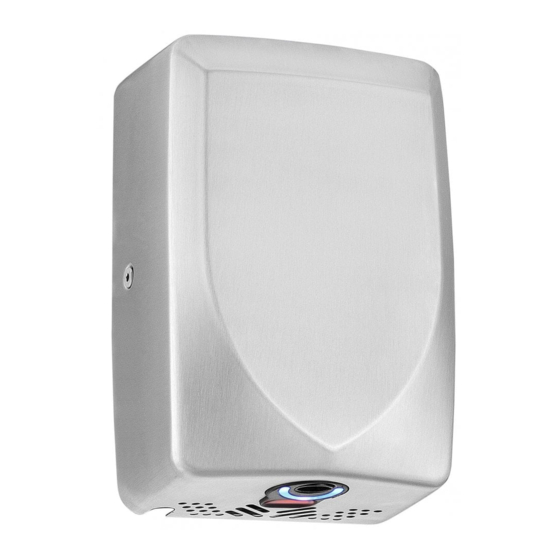Dryflow DFLIF02 사용자 설명서 - 페이지 9
{카테고리_이름} Dryflow DFLIF02에 대한 사용자 설명서을 온라인으로 검색하거나 PDF를 다운로드하세요. Dryflow DFLIF02 12 페이지.

Periodic cleaning of the unit is recommended. Remove cover and clean dryer dust lint.
Stainless steel is highly resistant to rust, but there are some very strict cleaning and maintenance rules to be
followed to prevent damage to its appearance.
Apply neutral detergents formulated for these purposes (non-ionic surfactants and citric acid). Apply
the detergent with soft cloth. Be careful with abrasive cloths. They may scratch the surface. Rinse with
water until all the detergent has gone.
Residue from hygiene products, liquid soap, shampoos, bath gel, etc, can also damage surfaces.
Rinse the surface with plenty of water after use.
Limescale stains can be prevented by drying the surface with a soft cloth after use.
Limescale from mains water: Apply a solution of one part vinegar and three parts water directly to the
stains and leave to work for a few minutes. Then rub with a soft cloth or damp sponge. Then give it a final
wash with plenty of water and neutral soap to ensure it is thoroughly rinsed.
Unacceptable practices (loss of guarantee)
- Do not apply detergents with abrasive products or which contain:
Hydrochloric acid
Sodium hypochlorite (bleach)
Formic acid.
- Do not use abrasive utensils like metal sourcing pads or abrasive sponges.
- Do not spray the detergent on the surface, because the liquid can get into the openings or cracks in
them and cause damage.
- Do not use anti-limescale and descaling cleaning products. They are not suitable for cleaning stainless
steel.
- Do not use silver cleaners, contain chlorides that attack stainless steel.
Bleach and descalers are often applied to bathroom equipment and left to work for a time. This
leads to the release of gases that contain chloride, which together with the water in the surface
cause chlorides to run down the surface of the stainless steel. This rusts both internal and external
surfaces.
